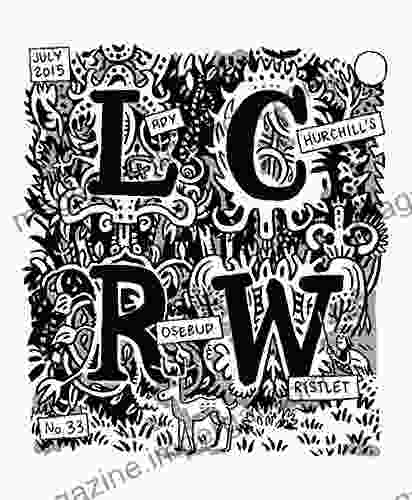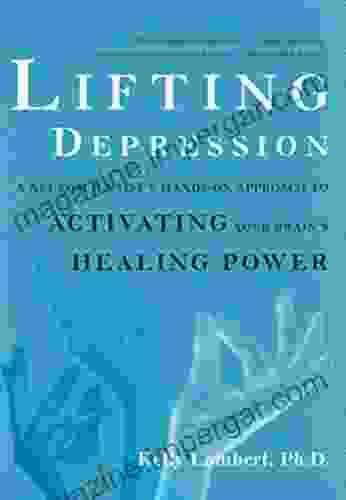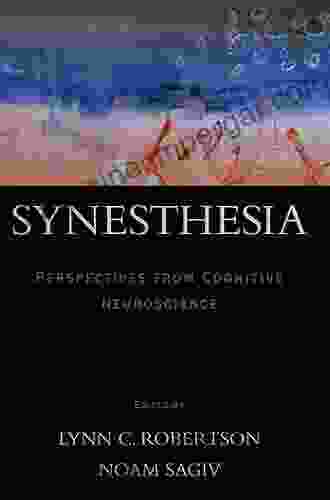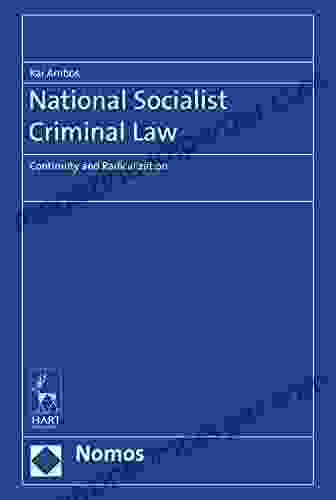Synesthesia: Unlocking the Secrets of Perception and Imagination

<p> Synesthesia is a rare condition, affecting only about 4% of the population. However, it is a remarkably consistent condition, with synesthetes from all over the world reporting similar experiences. This suggests that synesthesia is not simply a random quirk of the brain, but rather a real neurological phenomenon. </p> <p> In recent years, there has been a growing interest in synesthesia from cognitive neuroscientists. This research has helped to uncover the mechanisms underlying synesthesia and its implications for our understanding of perception, imagination, and the nature of consciousness. </p> </div> <div class="section"> <h2>The Science of Synesthesia</h2> <p> Cognitive neuroscientists have used a variety of techniques to study synesthesia, including brain imaging, behavioral experiments, and genetic analysis. This research has shown that synesthesia is caused by cross-wiring in the brain. In typical brains, the senses are processed in separate areas of the brain. However, in synesthetic brains, the senses are connected in unusual ways. This cross-wiring leads to the automatic, involuntary experiences that are characteristic of synesthesia. </p> <p> The exact cause of synesthesia is unknown. However, there is some evidence that it may be genetic. Studies have shown that synesthesia is more common in families with a history of the condition. Additionally, synesthesia has been linked to certain genes, such as the V1 gene, which is involved in the processing of visual information. </p> </div> <div class="section"> <h2>The Implications of Synesthesia</h2> <p> Synesthesia has a number of implications for our understanding of perception, imagination, and the nature of consciousness. First, synesthesia shows that the senses are not as separate as we might think. In fact, the senses are constantly interacting with each other, and synesthesia is simply one example of this interaction. </p> <p> Second, synesthesia suggests that the brain is capable of creating new experiences that are not based on direct sensory input. This is a remarkable ability, and it shows that the brain is not simply a passive receiver of information. Rather, the brain is an active organ that is constantly creating and interpreting our experiences. </p> <p> Third, synesthesia raises questions about the nature of consciousness. Synesthetes often report that their synesthetic experiences feel very real. This suggests that consciousness is not simply a product of sensory input. Rather, consciousness is a complex phenomenon that is influenced by a variety of factors, including our memories, expectations, and beliefs. </p> </div> <div class="section"> <h2>Synesthesia in Art and Literature</h2> <p> Synesthesia has been a source of inspiration for artists and writers for centuries. Synesthetic artists often use their condition to create unique and evocative works of art. For example, the painter Wassily Kandinsky was a synesthete who saw colors when he heard music. His paintings are known for their vibrant colors and abstract forms, which reflect his synesthetic experiences. </p> <p> Synesthesia has also been a popular theme in literature. Writers such as Vladimir Nabokov, James Joyce, and Salman Rushdie have all explored synesthesia in their work. Synesthetic writers often use their condition to create vivid and imaginative descriptions of the world. </p> </div> <div class=""> <p> Synesthesia is a fascinating and complex phenomenon that has much to tell us about the nature of perception, imagination, and consciousness. By studying synesthesia, cognitive neuroscientists are gaining a new understanding of how the brain works and how we experience the world. </p> </div>Relevant long descriptive keyword: Synesthesia: Exploring the Neurological Condition That Blends the Senses
SEO title h1: Synesthesia: Unlocking the Secrets of Perception and Imagination
5 out of 5
| Language | : | English |
| File size | : | 9432 KB |
| Text-to-Speech | : | Enabled |
| Screen Reader | : | Supported |
| Enhanced typesetting | : | Enabled |
| Print length | : | 285 pages |
| Lending | : | Enabled |
5 out of 5
| Language | : | English |
| File size | : | 9432 KB |
| Text-to-Speech | : | Enabled |
| Screen Reader | : | Supported |
| Enhanced typesetting | : | Enabled |
| Print length | : | 285 pages |
| Lending | : | Enabled |
Do you want to contribute by writing guest posts on this blog?
Please contact us and send us a resume of previous articles that you have written.
 Book
Book Novel
Novel Page
Page Chapter
Chapter Text
Text Story
Story Genre
Genre Reader
Reader Library
Library Paperback
Paperback E-book
E-book Magazine
Magazine Newspaper
Newspaper Paragraph
Paragraph Sentence
Sentence Bookmark
Bookmark Shelf
Shelf Glossary
Glossary Bibliography
Bibliography Foreword
Foreword Preface
Preface Synopsis
Synopsis Annotation
Annotation Footnote
Footnote Manuscript
Manuscript Scroll
Scroll Codex
Codex Tome
Tome Bestseller
Bestseller Classics
Classics Library card
Library card Narrative
Narrative Biography
Biography Autobiography
Autobiography Memoir
Memoir Reference
Reference Encyclopedia
Encyclopedia Julie Paquin
Julie Paquin Kehinde Adegbite
Kehinde Adegbite Kamal Biswas
Kamal Biswas Kelly Kennedy
Kelly Kennedy Karen Farrington
Karen Farrington Karin Slaughter
Karin Slaughter Julietta Singh
Julietta Singh Judith Clancy
Judith Clancy Joshua Shapiro
Joshua Shapiro Joyce Scardina Becker
Joyce Scardina Becker Katherine Gustafson
Katherine Gustafson Joy Lennick
Joy Lennick Kathy A Zahler
Kathy A Zahler Keith Thomson
Keith Thomson Juan Silva
Juan Silva Kai Ambos
Kai Ambos Joseph W Ciarrocchi
Joseph W Ciarrocchi Katharine Rapoport
Katharine Rapoport Keith Bradsher
Keith Bradsher Kathrin Lake
Kathrin Lake
Light bulbAdvertise smarter! Our strategic ad space ensures maximum exposure. Reserve your spot today!

 Cormac McCarthyWoman Guide to Understanding Abuse in Relationships: Unveiling the Hidden...
Cormac McCarthyWoman Guide to Understanding Abuse in Relationships: Unveiling the Hidden...
 Johnny TurnerMeet Phlebotomy Technician Specialist Kathryn Kalanick: The Expert Behind the...
Johnny TurnerMeet Phlebotomy Technician Specialist Kathryn Kalanick: The Expert Behind the... Kendall WardFollow ·14.3k
Kendall WardFollow ·14.3k Henry HayesFollow ·3.9k
Henry HayesFollow ·3.9k Deion SimmonsFollow ·13.2k
Deion SimmonsFollow ·13.2k Allen GinsbergFollow ·18.4k
Allen GinsbergFollow ·18.4k Jay SimmonsFollow ·10k
Jay SimmonsFollow ·10k Johnny TurnerFollow ·2.4k
Johnny TurnerFollow ·2.4k H.G. WellsFollow ·14.8k
H.G. WellsFollow ·14.8k Eli BlairFollow ·13.2k
Eli BlairFollow ·13.2k

 Christian Carter
Christian CarterUnlock Your Cognitive Potential: Embark on a Brain...
"The Brain Fitness Workout"...

 Cortez Reed
Cortez ReedLady Churchill's Rosebud Wristlet No. 33: A Timeless...
Embrace the Legacy of a Remarkable...

 Hector Blair
Hector BlairAm Your Father, Brother: A Gripping Tale of Identity,...
A Heartfelt Exploration of Family Ties and...

 Gary Cox
Gary CoxUnlock the Secrets of Brain Healing: A Neuroscientist's...
: The Revolutionary Power...

 Eugene Scott
Eugene ScottMoments in Time: A Chronological History of the El Paso...
The El Paso...

 Alexandre Dumas
Alexandre DumasUnlocking the Power of HAMP: A Comprehensive Guide to...
Homeownership is...
5 out of 5
| Language | : | English |
| File size | : | 9432 KB |
| Text-to-Speech | : | Enabled |
| Screen Reader | : | Supported |
| Enhanced typesetting | : | Enabled |
| Print length | : | 285 pages |
| Lending | : | Enabled |








